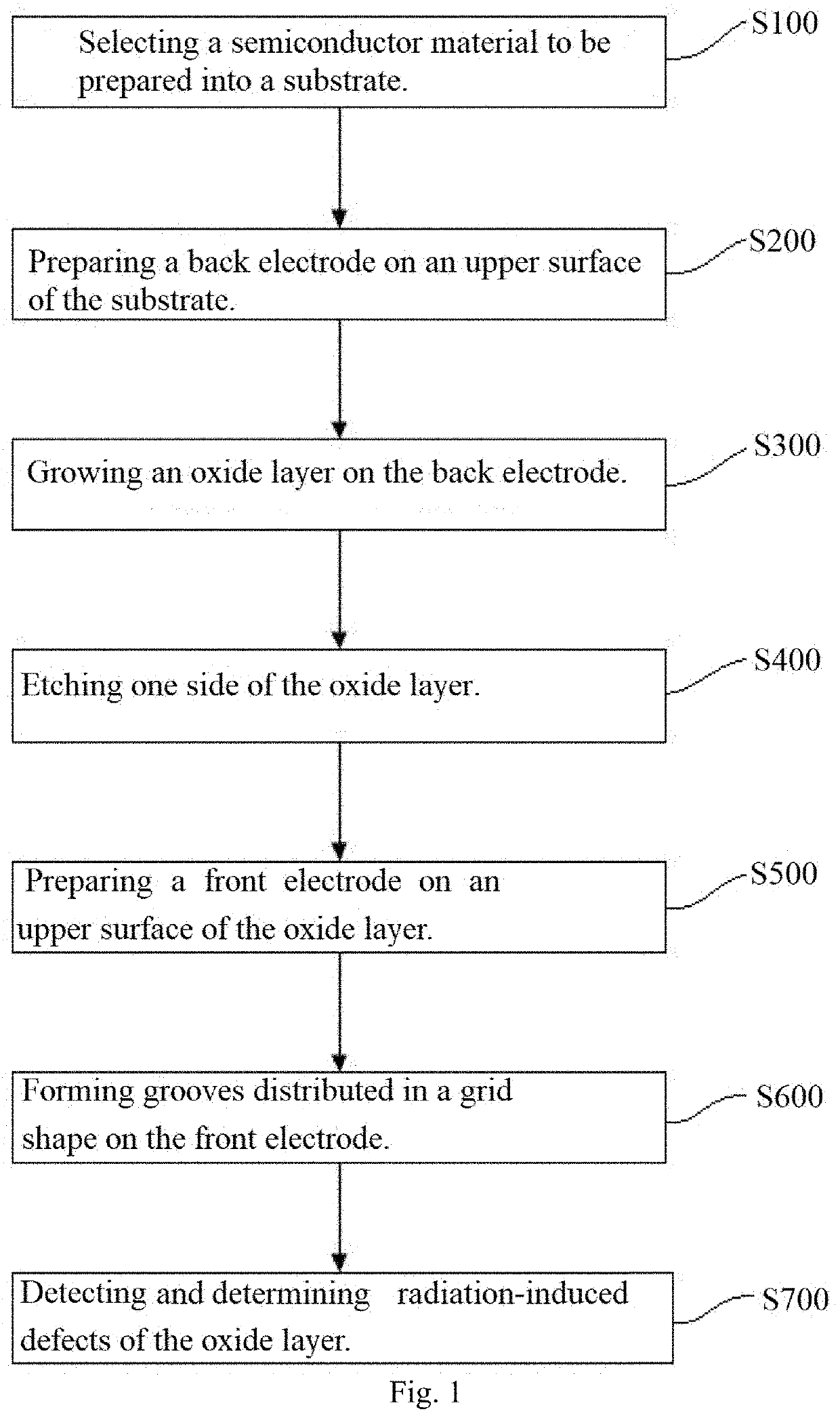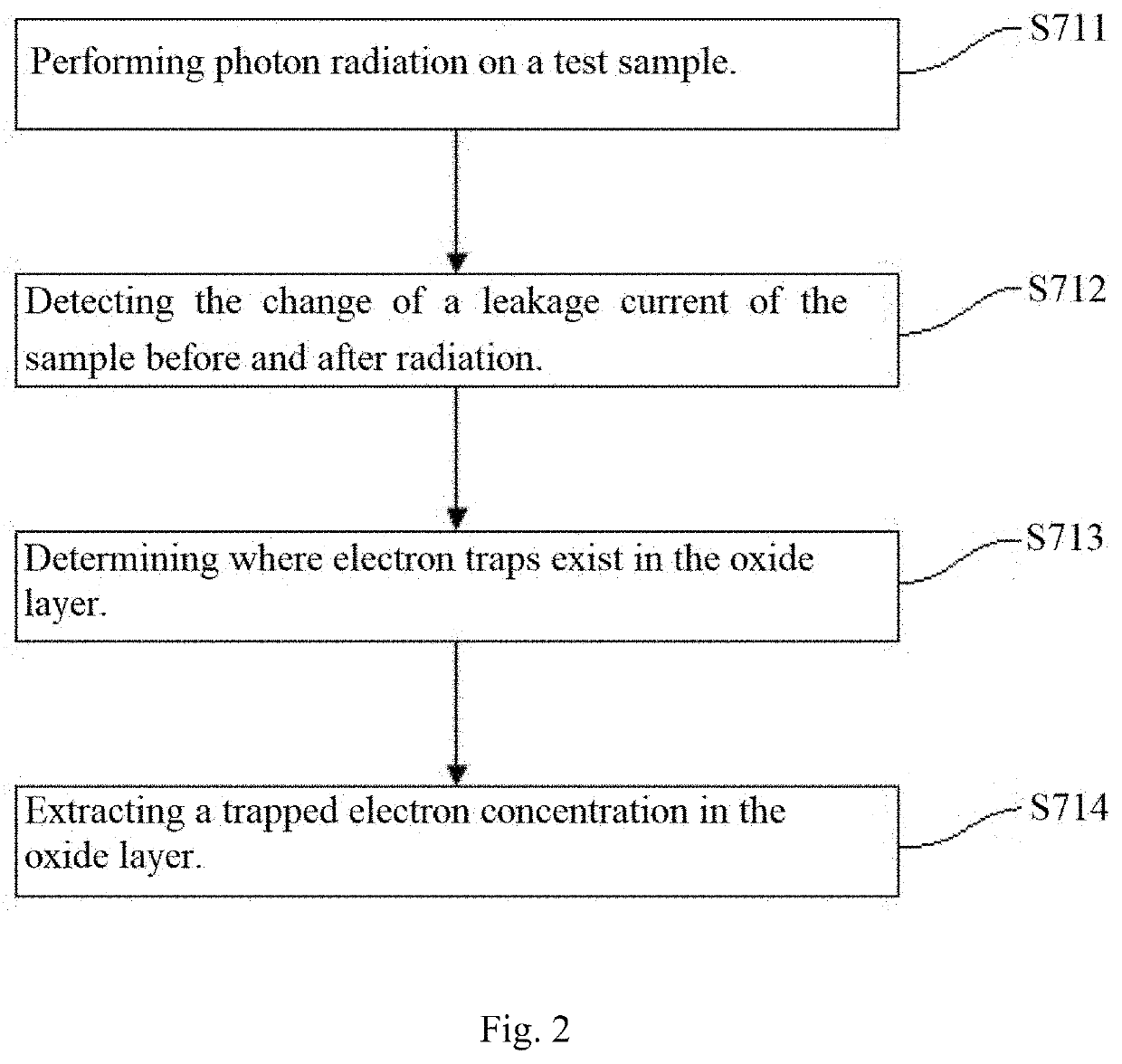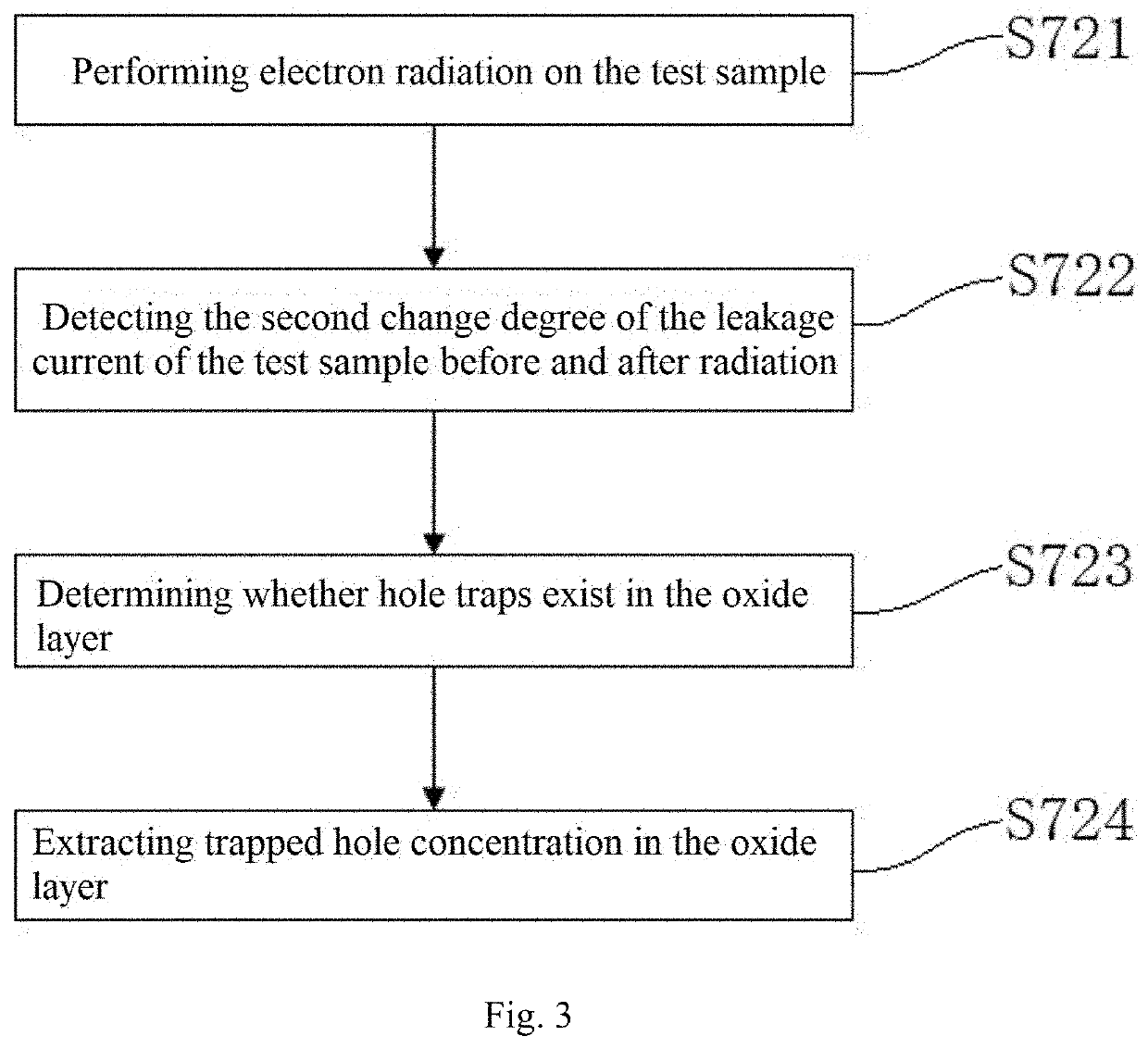Detection Method for the Radiation-induced Defects of Oxide Layer in Electronic Devices
a technology of radiation-induced defects and electronic devices, which is applied in the direction of material analysis by transmitting radiation, etc., can solve the problems of affecting the property evolution of the electronic device, the quality and reliability of the electronic device directly affected by the electronic device, and the formation of radiation-induced defects of the oxide layer
- Summary
- Abstract
- Description
- Claims
- Application Information
AI Technical Summary
Benefits of technology
Problems solved by technology
Method used
Image
Examples
first embodiment
[0065]The present embodiment provides a detection method for radiation-induced defects of an oxide layer in electronic devices. As shown in FIG. 4 and FIG. 5, the detection method includes the following steps.
[0066]Step S100: an N-type semiconductor material is selected to be prepared into a substrate 1, wherein the doping concentration of the substrate 1 is 1e19 cm−3, the thickness ti of the substrate 1 is 50 mm, and the substrate is square and has the area of 10 mm×10 mm.
[0067]Step S200: a back electrode 2 is prepared on an upper surface of the substrate 1 by physical vapor deposition.
[0068]Step S300: an oxide layer is prepared on the back electrode 2 in a dry / wet oxygen mixed manner. Specifically, firstly, dry oxygen oxidation is performed for 30 min, then, wet oxygen oxidation is performed for 60 min, and finally, dry oxygen oxidation is performed for 50 min. The manner is the same as an oxidation manner of a to-be-tested electronic device.
[0069]Step S400: one side of the oxide ...
second embodiment
[0082]The present embodiment provides a detection method for radiation-induced defects of an oxide layer in electronic devices. The detection method includes the following steps.
[0083]Step S100: a P-type semiconductor material is selected to be prepared into a substrate, wherein the doping concentration of the substrate is 1e20 cm−3, the thickness of the substrate is 1 mm, and the substrate is square and has the area of 1 mm×1 mm.
[0084]Step S200: a back electrode is prepared on an upper surface of the substrate by chemical vapor deposition.
[0085]Step S300: an oxide layer is prepared on the back electrode in a dry oxygen manner. Specifically, dry oxygen oxidation is performed for 80 min. The manner is the same as an oxidation manner of a to-be-tested electronic device.
[0086]Step S400: one side of the oxide layer is etched, wherein the etching area is 100 μm×100 μm and wet etching is adopted as an etching manner; and an etched part is exposed out of the back electrode.
[0087]Step S500:...
third embodiment
[0099]The present embodiment provides a detection method for radiation-induced defects of an oxide layer in electronic devices. The detection method includes the following steps.
[0100]Step S100: an N-type semiconductor material is selected to be prepared into a substrate, wherein the doping concentration of the substrate is 1e21 cm−3, the thickness of the substrate is 100 mm, and the substrate is rectangular and has the area of 1 mm×2 mm.
[0101]Step S200: a back electrode is prepared on an upper surface of the substrate by gold metallization.
[0102]Step S300: an oxide layer is prepared on the back electrode in a wet oxygen manner. Specifically, wet oxygen oxidation is performed for 90 min. The manner is the same as an oxidation manner of a to-be-tested electronic device.
[0103]Step S400: one side of the oxide layer is etched, wherein the etching area is 0.5 mm×1 mm, and plasma etching is adopted as an etching manner; and an etched part is exposed out of the back electrode.
[0104]Step S5...
PUM
| Property | Measurement | Unit |
|---|---|---|
| resistivity | aaaaa | aaaaa |
| energy | aaaaa | aaaaa |
| electric field | aaaaa | aaaaa |
Abstract
Description
Claims
Application Information
 Login to View More
Login to View More - R&D
- Intellectual Property
- Life Sciences
- Materials
- Tech Scout
- Unparalleled Data Quality
- Higher Quality Content
- 60% Fewer Hallucinations
Browse by: Latest US Patents, China's latest patents, Technical Efficacy Thesaurus, Application Domain, Technology Topic, Popular Technical Reports.
© 2025 PatSnap. All rights reserved.Legal|Privacy policy|Modern Slavery Act Transparency Statement|Sitemap|About US| Contact US: help@patsnap.com



